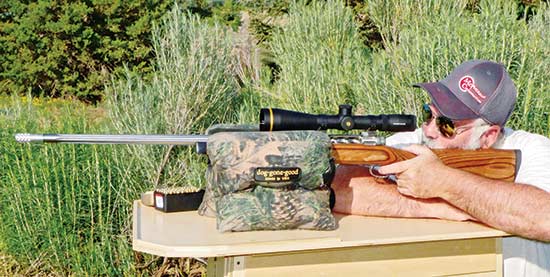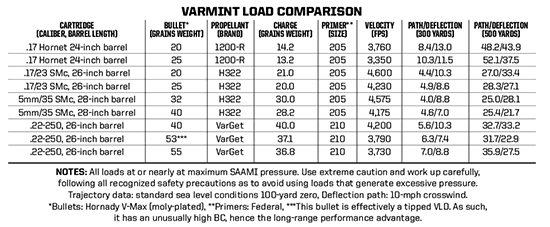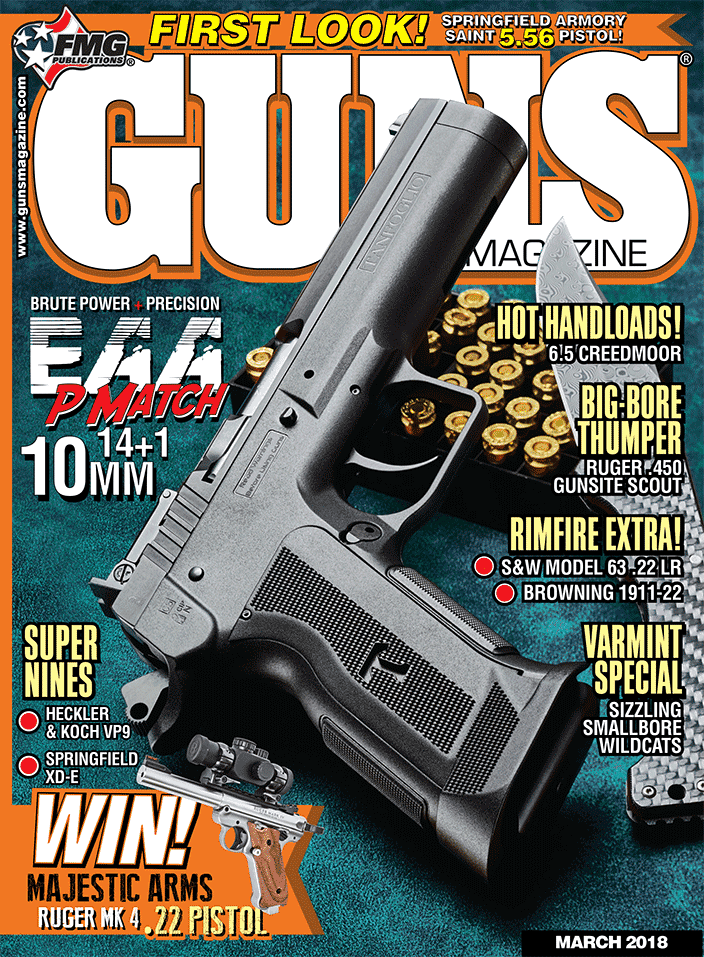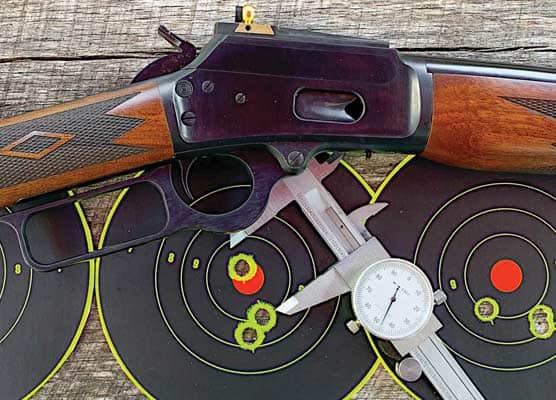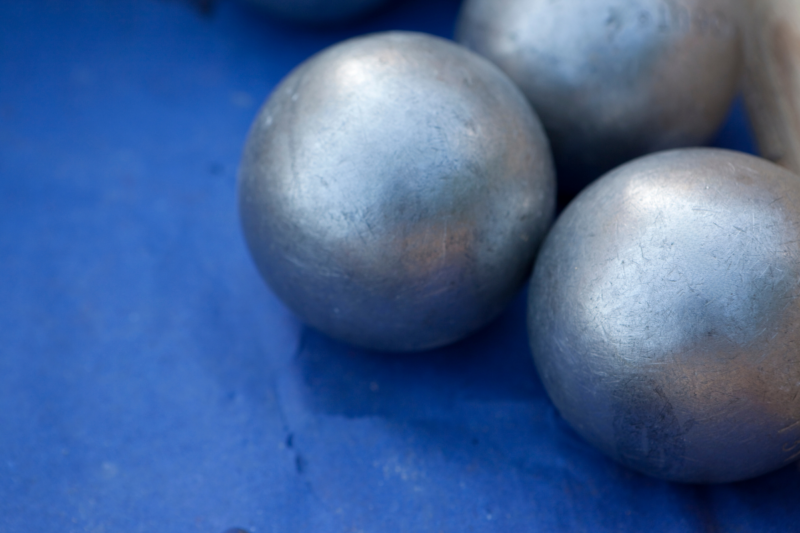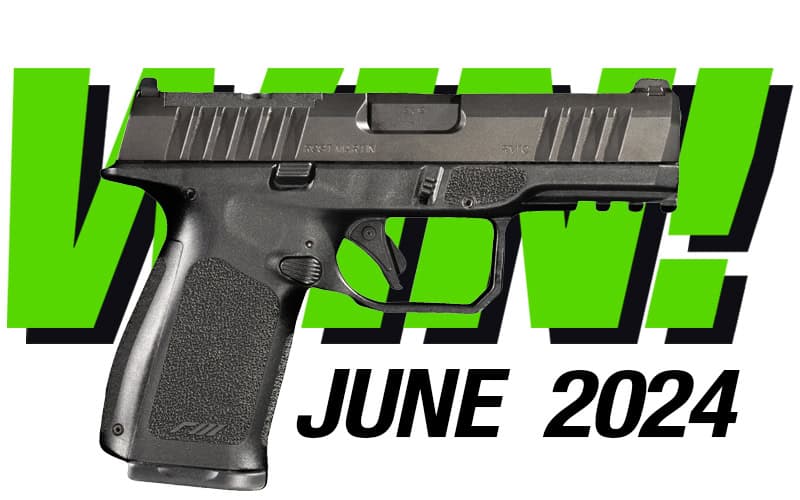The Golden Era Of Varminting is Now!
Modern Components, Tools And Equipment Have Changed Everything
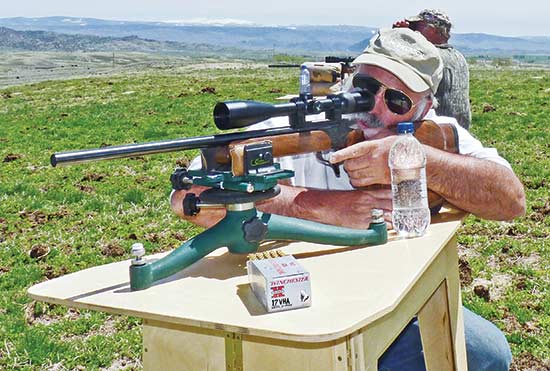
Mic lines up a shot at his Hench Bench. Good equipment makes all the difference. This combination—
an effective brake, top-quality barrel and an excellent Leupold scope on a Savage Target Action—makes
for one fine varminting setup. The dog-gone-good bag allows Mic to rapidly locate targets and to quickly
settle the reticle on each new one.
Evolution of the shooting sports has been progressing for hundreds of years, but the most recent innovations have taken ballistic performance far above what was available a generation ago. While I would find it satisfying to be proven wrong, I suspect that, as of 2017, we have approached the limit of feasible performance in conventional guns and ammunition. This applies to all shooting sports and disciplines, including shotgun, handgun, self-defense and hunting. To highlight this, I will offer a few thoughts and examples centering on varminting.
When Nosler introduced its varminting version of its Ballistic Tip (BT) bullet, few shooters could have imagined where it would lead. In 1984, Nosler chose me as the first gunwriter to test its new 40-grain, 22-caliber Ballistic Tip bullets.
Compare the Nosler BT to the 52-grain Sierra Match hollowpoint (HP), this BT is 23 percent lighter, which means we can launch it 12 percent faster, yet it has essentially the same BC (ballistic coefficient—efficiency in cutting through the air), which means it retains velocity just as well as the 23-percent-heavier bullet does.
I soon found a load launching the 40 BT at 4,250 fps from my .22-250 Savage M12 and placed all shots inside a 3/10-MOA circle at 100 yards. When I did my part in correcting for wind and distance, hits on smaller species of vermin were routine to beyond 400 yards.
Compared to a then-typical load in the .22-250 using a 55-grain bullet, launching a 40-grain bullet with a similar BC 12 percent faster meant I could misjudge target distances by more than twice as much and still make solid hits. And, the superior terminal performance of the BT meant those hits resulted in devastating kills at much greater distances.
The benefits of using a lighter bullet with a similar BC were obvious—less recoil, flatter trajectory, and greater retained velocity. The benefits of using a bullet with improved terminal performance were equally obvious: more devastating kills at greater distances. Varmint hunting would never be the same.
One Hot .20!
Very soon thereafter, my late partner, By Smalley, and I created the 5mm/35 SMc. To make this 20-caliber round, we necked down the 6mm Norma BR case and fireformed it in a chamber with Ackley body taper and the ideal shoulder design. Our SMc design features improve internal ballistic performance (more velocity with less barrel heating; due, chiefly, to the acceleration of less unburned propellant down the bore).
The 5/35 case has about 25 percent less usable capacity than the .22-250 case and launches bullets with 20 percent less cross-sectional surface area. All else being equal, the combination of these factors would result in the 5/35 giving about 2 percent less velocity with 20 percent lighter bullets and about 12 percent less velocity with bullets of similar weight. However, all else is not equal! Design matters, and the superior design of the SMc case allows it to launch 40-grain bullets almost as fast as the .22-250 can. The 5/35 forever changed my varmint hunting—smaller is better.
I could easily overheat the .22-250 barrel by rapidly firing half-a-dozen shots. To overheat the 5/35 barrel, I had to shoot more than 20 shots just about as fast as I could and do so on a hot day. To reduce recoil, I preferred the 32-grain Nosler BT. It has about the same BC as the 22-caliber, 40-grain Nosler BT. My favorite 5/35 load launches the 32-grain BT at 4,600 fps (from a 28-inch barrel) and, in otherwise identical guns, generates 29 percent less recoil than my .22-250 load launching the 40-grain bullet at 4,250 fps. Yet, the 5/35 load shoots much flatter and hits just as hard.
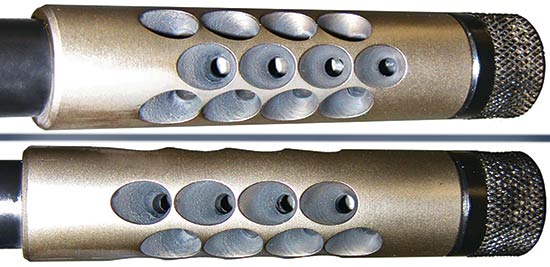
Effective muzzlebrakes have only recently been widely adapted to sporting arms. These reduce recoil
and improve the shooting experience. For hunting, these also improve the shooter’s chance of seeing the
hit and reduce recoil recovery time. This improves the odds of making a second shot count. The pictured
LAW Brake does everything any brake does without adding noticeably to noise, as perceived by the shooter.
A Sweet .17
Well, of course I could not leave it at that. Because a 20-caliber cartridge suited my varminting needs better than any 22-caliber cartridge did, I had to try a 17-caliber cartridge. After Hornady introduced the 20- and 25-grain 17-caliber V-Max bullets, I obtained a Remington Model 7 in .17 Fireball, for testing. I then realized the Fireball case was amenable to the SMc design. I ordered a reamer and barrel. Soon I was chambering a barrel for a Model 12 Savage in .17/23 SMc.
Despite the .17/23 having 10 percent less usable capacity than the .17 Remington, performance is indistinguishable owing to the superior SMc case design. My best .17/23 load launches the 25-grain V-Max at 4,230 fps. The BC of this bullet is similar to BC of the various 40-grain, 22-caliber tipped bullets. This means it has a similar trajectory to those bullets when launched at similar velocity while generating only 40 percent of the recoil. But at any given target distance this bullet only delivers about 60 percent of the energy the 5/35 will deliver.
For smaller species of vermin this load carries enough energy to generate explosive terminal performance with solid hits well past 300 yards. It is very difficult to heat the barrel enough to significantly reduce barrel life. And, recoil is so modest you can see exactly where the bullet hits. With the addition of a LAW muzzlebrake, recoil is very nearly zero—and just exactly how little recoil is too little?
As they say, seeing is believing. As I write this, I have allowed seven other serious varmint hunters to shoot my .17/23. Every one of those now owns one or more rifles chambered in .17/23 and now uses it for the majority of his varminting needs. Several of those shooters have let other varminters shoot their .17/23’s. At least three of those guys now have .17/23’s.
When launching bullets I have plated with molybdenum-disulfide through a high-quality barrel, using a clean-burning propellant (such as H322), I have never seen an increase in pressure or a noticeable decrease in accuracy, even after firing as many as 750 shots without bore cleaning. The only time I ever clean my barrels is before returning the gun to long-term storage. This is to prevent the corrosion associated with metallic fouling.
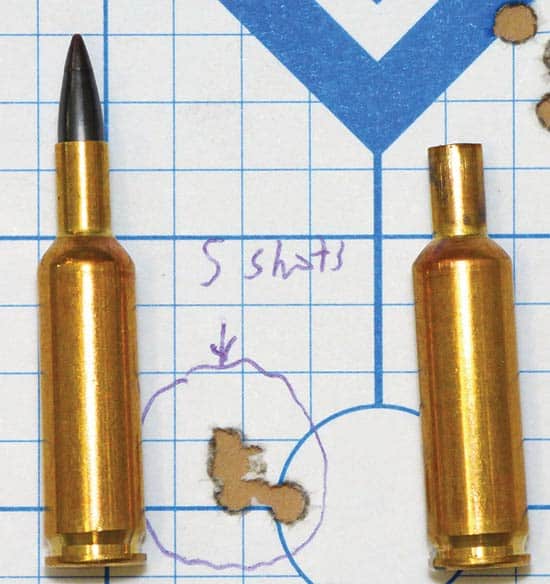
The .17/23 SMc is capable of fine accuracy, as demonstrated by groups fired during initial
load development work. This particular load led Mic to the H322 charge and bullet-to-rifling
jump combination needed to get even better accuracy. The load he settled uses 20 grains of
H322 to launch the efficient 25-grain V-Max at 4,230 fps and routinely shoots inside 1/4-MOA.
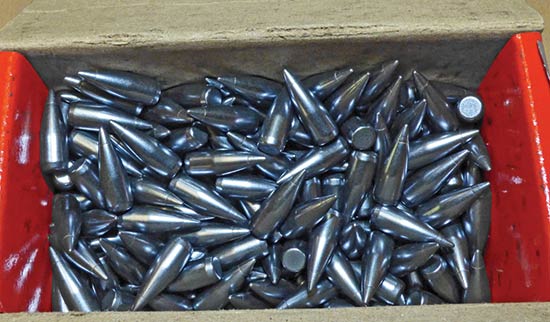
Properly moly-plated bullets dramatically reduce barrel fouling, extend barrel life, and improve performance.
Processing bullets is simple but use of moly-plated bullets requires load alterations, careful bore cleaning
before initial use, including pre-treating the bore with a moly-saturated grease.
A Good Thing?
A logical question is: If 17-caliber is so good, what about an even smaller bore size? For now, anything significantly smaller than 17-caliber will be of limited value. Reasons for this include: difficulty of charging cases—any feasible propellant tends to logjam—problems with bore cleaning, since any standard cleaning rod is so flimsy as to be too flexible for easy use, and other bore-cleaning systems (such as a bore snake) are equally problematic. Finally, such tiny bullets deliver insufficient energy.
Delivered energy is the one area where the best .17’s fall short for some varminting applications. It is impossible for any existing 17-caliber bullet to carry enough energy to produce devastating kills of larger species of vermin at distances where solid hits are still feasible. Standardization of a 1:8-inch-twist barrel and introduction of a 25-grain very-low-drag tipped bullet would eliminate this limitation.
I am not tying to sell anyone on the .17/23. My intention is to demonstrate just how good a .17 can be for typical varminting, when combined with modern components. Consider the following: Mike Walker at Remington developed a new varminting and target cartridge Remington introduced as the .222 in 1955. Within a few years, the .222 cartridge was dominating in both varminting and benchrest shooting where, formerly, wildcat chamberings had held sway for the vast majority of serious shooters in both disciplines. By the late 1950s, every varmint hunter either owned or wanted to own a .222.
In terms of what the .222 could do for the average varmint hunter, with the very best loads a handloader could concoct before 1984, the .222 was not even in the same league as .17/23 loads. The ballistic comparison between typical .222 loads of the 1950s and .17/23 loads is similar to comparing the .222 to the .22-250 Remington, or, in terms of big game hunting, consider comparing a .308 Winchester to a .300 Magnum.
A better comparison for .17/23 trajectory and terminal performance is the .220 Swift. But, unlike the Swift, in which barrel heating is a serious concern, the .17/23 heats the barrel so little as to make it a non-issue. For this and other reasons, the .17/23 has many times the useful barrel life. And, it generates less than 1/3 the recoil.
Consider a scenario: If someone sat beside me as we varmint hunted at unlimited targets and we were firing shots at the same rate, and he used a Swift, .22-250, or .204 Ruger, while I used my .17/23, his rifle would overheat in less than one hour. My barrel will last through 5,000 rounds of such use. Design matters.
So, if you are serious about varminting, you owe it to yourself to consider the .17 Hornet and the .17 Fireball. If you can afford it and are interested, Pacific Tool & Gauge can deliver a .17/23 SMc reamer to your gunsmith. With that, he can make you a .17/23, in which you can fireform cases by shooting .17 Fireball ammo.
Alternatively, the handloader might consider the .17 VHA, which uses the 4.6x30mm HK case. This little round launches the 20-grain V-Max at 3,550 fps using only about 8.3 grains of Lil’ Gun. It duplicates .17 Hornet performance while using far less propellant and generating far less recoil, noise, and barrel heating. While the .17 VHA will not do everything the .17/23 will do, it will make clean kills at 300 yards, and do so with so little barrel heating and recoil neither are even worth discussing.
Modern 17-caliber chamberings have many advantages over any larger-caliber chambering for varmint hunting of smaller species. Similarly, improvements in bullets (both BC and terminal performance) allow modern big-game hunters to do things simply not feasible a generation ago. The same applies to most other shooting sports. As my friend, John Anderson, long-time editor of Varmint Hunter magazine noted, “… we are living in a golden era….” My comment: guns are better, barrels are better, optics are better, factory ammunition is better, and handloading tools and components are better—golden indeed!
